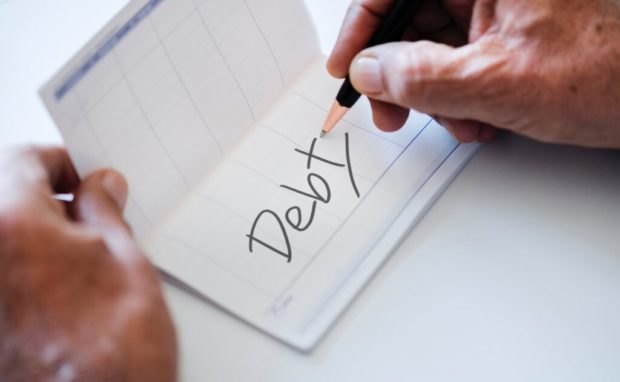How the Debt Snowball Calculator Will Make You Debt Free
Financial security is what everyone wishes to have, but it is more than just a wish. You have to work for it, especially when your finances are in a muddle and your credit score is in the red. Financial security can be attainable with the help of a debt snowball calculator.
So, how do you go about building up your credit until your finances bounce back and you’re now free to create a new financial milestone? Indeed, many options are available, but the snowball calculator is one of the feasible methods of getting out of debt, and in good time.
Like many other individuals in the same situation, you might find it challenging to use the calculator.
We’ve got you covered.
Offsetting your debt with the calculator as mentioned above could be as easy as making a cup of coffee if you go about it the right way.
So, read on to learn how the debt snowball calculator can be a magic wand for offsetting your bills.
Debt Snowball Calculator

It’s essential to clarify the concept because that would aid in the comprehension of the functionalities.
So, what is the debt snowball calculator? It can be like the snowball games played by kids. The method involves gaining more traction by packing more snow into a tight ball.
The ball would be rolled down a steep surface. As it rolls, it gathers more items. Then it gradually grows into something similar to a “snow boulder.”
In the same manner, the work of this calculator is to accelerate the offsetting of debt. Ideally, it starts from the small to the highest. So, you shouldn’t burden about the thousand dollar debt you accrued.
Instead, the model suggests “starting small and growing big.”
This calculator has other spectacular things to offer. The first is encouraging debtors to start paying off smaller debts. The second is to spike the debtors’ interests to become debt-free.
The latter is feasible because once the first success at paying off a small debt is there, the inspiration to find more ways to save and pay more debts comes into play.
Related Articles
How to Use a Mortgage Rate Calculator Refinance
20 Tips to Save Money in 2020
How to Sell Your House
How To Use This Debt Snowball Calculator
You’ve now seen that the calculator has many positive features concerning the offsetting of your debts. The primary challenge is how to use it.
While it may seem like simple arithmetic, you still need to be cautious not to overdo things.
There is more to the movement, from the small sums to the more significant variations than you can imagine. So, pay attention as we take you through the methods of using the debt snowball calculator.
1. Gather All Your Debts
Many people may not be aware of the sum they owe. Furthermore, only a few can recall the actual places where they incurred the debt.
The amount of the debt matters and in order of their highest interest rate, but you also need to be sure of the recipients of the repayment when you start.
That is the first step in using the snowball calculator. Don’t rush it! Take time to go through the payment calculator, places you incurred debts and note them.
As a rule of thumb, the debts should not contain the mortgage.
2. List the Debts from Small to Large

There are many things to consider when scaling the debts in working towards debt reduction. Most times, debtors find themselves in a fix by selecting or placing the high-interest rate debts first.
That should not be so.
No matter the interest rates, you must list the debts from the minimum to the maximum.
Now, here’s a clue to building the list. Remember to cut out the house or mortgage. Instead, focus on other categories, such as the student, the car and medical loans.
You can then put the smallest of the balances you owe at the top. The second-lowest should follow, then the third.
Continue in that format until you place the largest of the debts at the top.
3. Make Minimum Payments
Follow the sequence of the debt listing to start paying them off. Also, remember to make minimum payments on all debts but the smallest.
It is advisable to do so because not paying the minimum can attract additional penalties and fees.
That, in turn, would damage your credit score.
4. Pay Extra on the Smallest Balance
You shouldn’t only be aiming to pay off the smallest debt. If that is the focus, you will end up paying off the smaller debts and having a hard time paying off the bigger ones.
So try as much as you can to pay extra money on the smallest debts. That way, you get to pay it off faster, while having some balances for the next liabilities.
The idea is to raise the extra sums of money you received from side hustles or additional sources of income. They would then be put towards the loan at the top of the list.
With that, you would be paying off the more significant debts in small paces.
5. Replicate the Steps
Once you’ve successfully knocked off the smallest debt, the next thing to do is channeling your attention to the future liability on the list.
With the lowest balance out of the way, the extra money paid before would then be added to pay off the next.
Continue replicating the steps until you become debt-free.
How To Track Your Results
You also need to be familiar with your results. It helps to discover if you’re making headway or not.
Some of the tools in this category is the Debt Free Date, which is an estimated timeframe that the entire debt would be fully paid.
The Total Interest highlights the accumulated interests and the payables within the periods of repaying the debt.
The Payoff Order empowers you to switch between different debt payment methods (debt avalanche and snowball specifically) to see the differences in their interest rates.
On the other hand, the Payment Strategy shows how much debt you’ve paid off.
It also reveals the budget you have for each repayment and how much money you’re putting forward for the next debt.
The last but not the least, is the Total Monthly Payment that shows the current minimum monthly payments you’re paying and the likely monthly payments in the coming months, using the extra money you add for each debt.
Summary
It’s now evident that the debt snowball calculator is the perfect tool for highlighting your debts and taking immediate and informed action to settle them in good time.
Therefore, get one of those apps designed for snowball debt payoff and start feeling the snowball effect on your debts.
Sponsored Advertising Content:
Advertorial or Sponsorship User published Content does not represent the views of the Company or any individual associated with the Company, and we do not control this Content. In no event shall you represent or suggest, directly or indirectly, the Company's endorsement of user published Content.
The company does not vouch for the accuracy or credibility of any user published Content on our Website and does not take any responsibility or assume any liability for any actions you may take as a result of reading user published Content on our Website.
Through your use of the Website and Services, you may be exposed to Content that you may find offensive, objectionable, harmful, inaccurate, or deceptive.
By using our Website, you assume all associated risks.This Website contains hyperlinks to other websites controlled by third parties. These links are provided solely as a convenience to you and do not imply endorsement by the Company of, or any affiliation with, or endorsement by, the owner of the linked website.
Company is not responsible for the contents or use of any linked website, or any consequence of making the link.
This content is provided by New Start Advantage LLC through a licensed media partnership with Inquirer.net. Inquirer.net does not endorse or verify partner content. All information is for educational purposes only and does not constitute financial advice. Offers and terms may change without notice.



